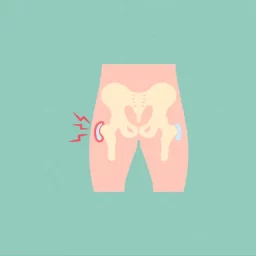Physiotherapy Care and Scoliosis Management: A Multifaceted Approach
Scoliosis is a medical condition characterized by an abnormal curvature of the spine. Normally, the spine has a natural curve, but in scoliosis, the spine can curve sideways in an “S” or “C” shape. This curvature can range from mild to severe and may cause the spine to rotate or twist. Discover our key physiotherapy management strategies for scoliosis.
What are the causes?
Causes of scoliosis can vary. Some cases are idiopathic, meaning the cause is unknown, but it often appears during growth spurts before puberty. Other causes include congenital spine abnormalities present at birth, neuromuscular conditions like cerebral palsy or muscular dystrophy, or injuries or infections affecting the spine.
Symptoms of scoliosis may include uneven shoulders or hips, a prominent shoulder blade, leaning to one side, or a visibly curved spine. In mild cases, scoliosis may not cause noticeable symptoms and might only be detected during a routine physical examination or screening.
Physiotherapy’s Role with Scoliosis Management:
Physiotherapy plays an important role in the management of scoliosis, especially in conjunction with other treatments like bracing or surgery. Here are some key strategies of physiotherapy care for scoliosis:
- Postural Training: Physiotherapists can teach specific exercises and techniques to improve posture. This includes teaching the individual how to maintain proper alignment of the spine during daily activities and while sitting, standing, and walking.
- Core Strengthening: Strengthening the muscles around the spine, particularly the core muscles (abdominals, obliques, back muscles), can help provide better support and stability to the spine. Stronger muscles can also help in managing the curvature and reducing the risk of progression.
- Stretching and Flexibility Exercises: Specific stretching exercises can help improve flexibility in tight muscles and joints, which can be particularly beneficial for individuals with scoliosis to reduce pain and discomfort associated with muscle imbalances.
- Breathing Exercises: Deep breathing exercises and techniques can aid in improving lung capacity and respiratory function, which may be affected by severe spinal curvature in some cases of scoliosis.
- Customized Exercise Programs: Physiotherapists often design individualized exercise programs tailored to the patient’s specific curve pattern, age, and overall health. These programs may include a combination of strengthening, stretching, and postural exercises.
- Pain Management: Physiotherapy can also focus on pain management techniques such as manual therapy, massage, heat or cold therapy, and electrical stimulation to alleviate discomfort associated with scoliosis.
- Education and Monitoring: Physiotherapists educate patients and their families about scoliosis, proper body mechanics, and strategies for maintaining spinal health. They also monitor progress and make adjustments to the treatment plan as needed.
- Collaboration with Chiropractic care: Chiropractic care in conjunction with physiotherapy include goals of stabilization of curve severity and pain relief. Chiropractors can take x-rays and analyze the degree of the curve through their assessment and expertise.
The bottom line:
It’s important to note that physiotherapy alone may not correct severe scoliosis curves, especially during periods of rapid growth. Scoliosis strategies at CURAVITA Health Group are used as part of a multidisciplinary approach. The goal of physiotherapy in scoliosis management is to improve function, reduce pain, and support overall spine health.
At CURAVITA, our expert team of Chiropractors, Physiotherapists and Massage therapists work together to maintain optimal spinal joint and muscle health.
For more information or to book an appointment with one of our chiropractors, physiotherapists or massage therapists, visit our clinic websites at Curavita Byward and Curavita Glebe.
Byward Market
Email: info.byward@curavita.com
Glebe
Email: info.glebe@curavita.com















